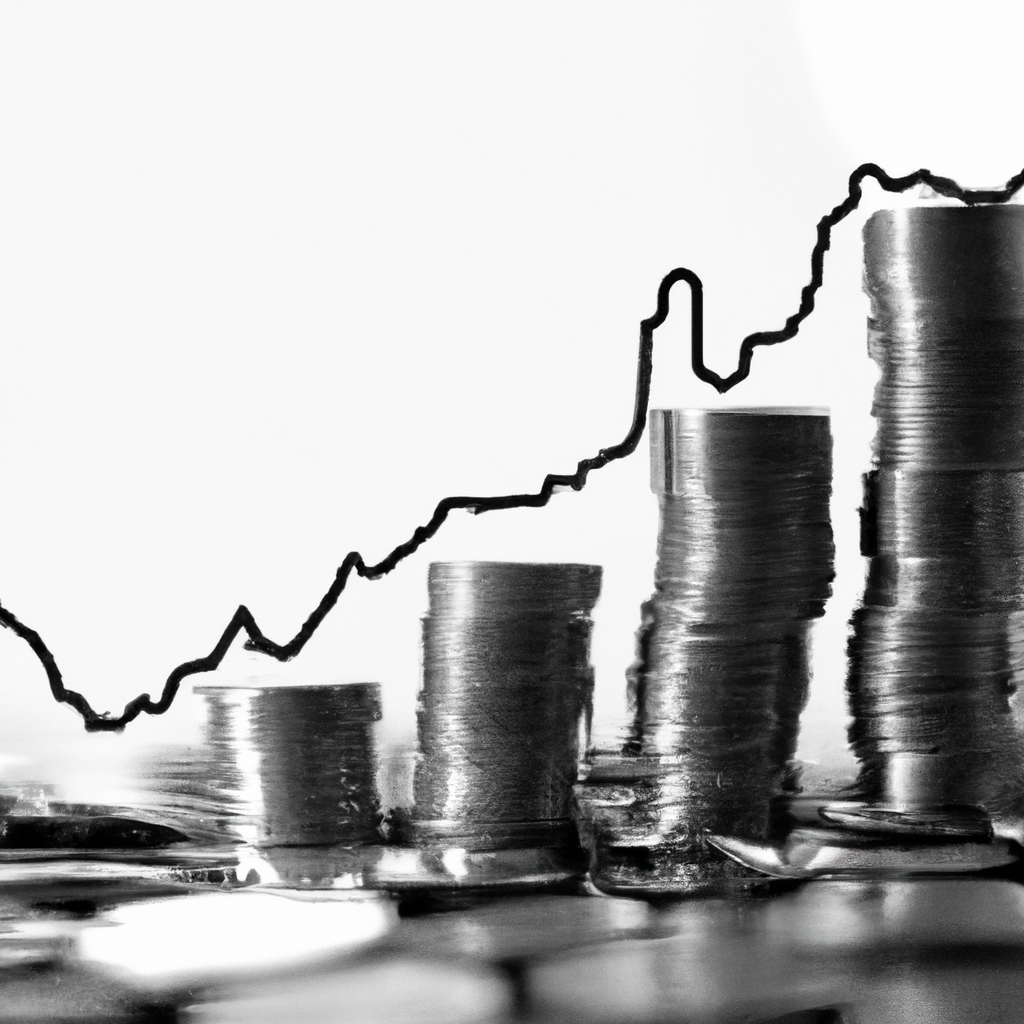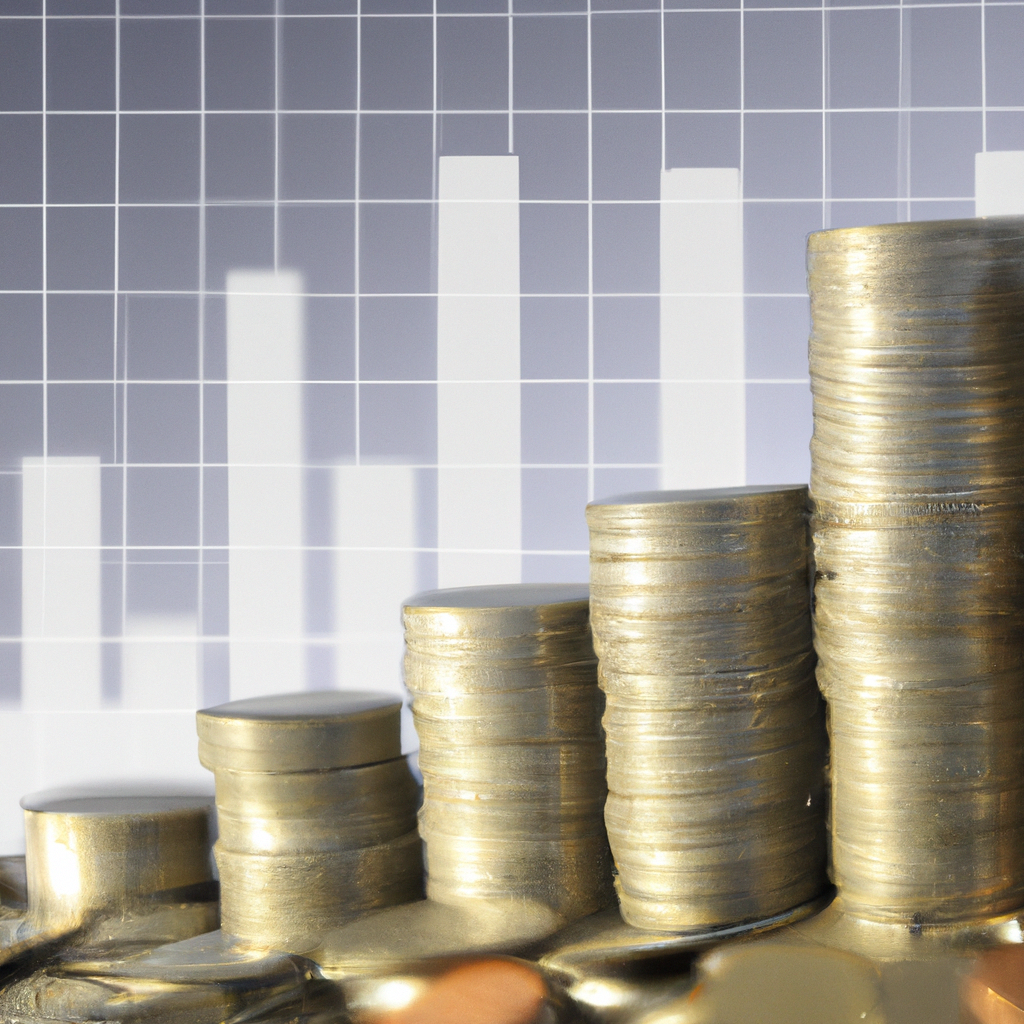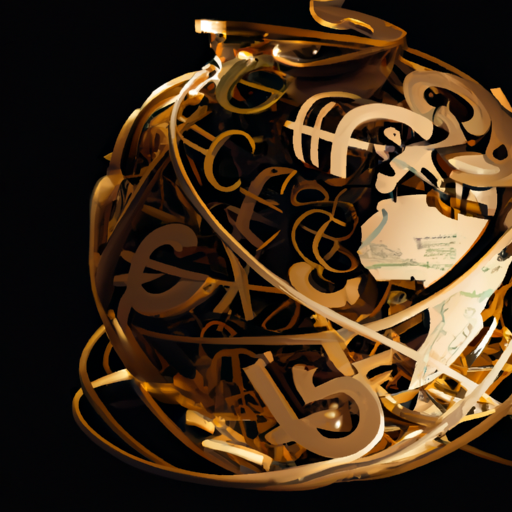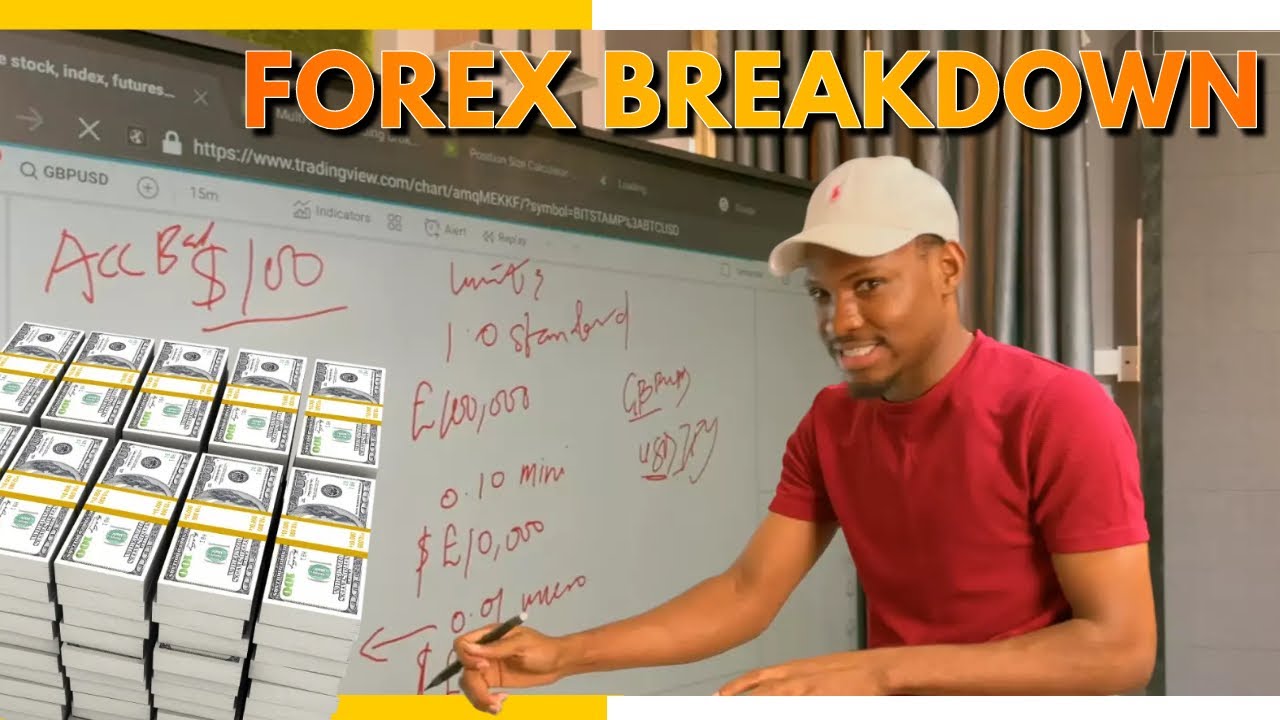Background
Introduction to Federal Reserve Governor Michelle Bowman
Federal Reserve Governor Michelle Bowman has signaled her support for raising interest rates, indicating she may take a more aggressive approach compared to her US central bank colleagues in tackling inflation. Bowman believes that further rate hikes will be necessary to bring inflation back to the desired 2% level in a timely manner. In her remarks prepared for an event hosted by the Independent Community Bankers of Colorado, she emphasized the slow progress expected on inflation due to the current level of monetary policy restraint. Bowman’s stance aligns with the projections released by Fed officials, which anticipate inflation to remain above 2% until at least the end of 2025.
Overview of her stance on interest rates
Bowman’s preference for raising interest rates is based on the belief that additional policy tightening is crucial to sustainably and promptly reduce inflation. She expressed her expectation that progress on inflation will be gradual, necessitating further rate increases. This implies a more proactive approach compared to her colleagues who may advocate for a more cautious strategy. Bowman’s readiness to take decisive action suggests a commitment to maintaining price stability and addressing inflationary pressures effectively.
Comparison to other US central bank colleagues
While the majority of Fed officials anticipate at least one more rate hike this year, Bowman’s stance indicates a potentially more aggressive approach. Her plural use of “hikes” demonstrates her inclination towards multiple rate increases to combat inflation. This stands in contrast to the median forecast of her central bank colleagues, who project a federal funds rate of 5.1% by the end of 2024. Bowman’s divergence suggests a willingness to apply a stronger monetary policy stance, focusing on bringing inflation down in a sustainable and timely manner.

## Reasons for Favored Rate Hikes
Achieving inflation target of 2%
Federal Reserve Governor Michelle Bowman has expressed her support for raising interest rates in order to achieve the target inflation rate of 2%. By increasing interest rates, Bowman believes that inflation can be effectively controlled and brought back down to the desired level. With inflation currently above 2% and projected to remain so until the end of 2025, she emphasizes the necessity of taking action to address this issue promptly.
Prediction of inflation staying above 2% until end of 2025
According to the median forecast by Fed officials, inflation is expected to persistently stay above 2% until at least the end of 2025. This projection further strengthens Bowman’s argument for raising interest rates as a means to combat inflationary pressures. By implementing additional rate hikes, she aims to curb inflation and ensure a more stable economic environment in the long run.
Slow progress on inflation due to current monetary policy restraint
Bowman acknowledges that progress on inflation has been sluggish due to the current level of monetary policy restraint. Recognizing the need for a proactive approach, she advocates for further policy tightening to expedite the reduction of inflation. By adjusting interest rates upward, she aims to remove the constraints on inflation and expedite its decline.
Need for sustainable and timely reduction of inflation
Lastly, Bowman emphasizes the importance of a sustainable and timely reduction of inflation through increased interest rates. By taking decisive actions now, she believes that inflation can be controlled more effectively, thereby safeguarding the stability of the economy in the long term. Bowman’s favored approach reflects her commitment to addressing inflationary concerns in a manner that ensures lasting results for both the financial markets and the broader economy.
Supporting Statements
Bowman’s remarks at the event hosted by the Independent Community Bankers of Colorado
During an event hosted by the Independent Community Bankers of Colorado, Federal Reserve Governor Michelle Bowman expressed her support for raising interest rates. She emphasized that she believes multiple rate hikes may be necessary to effectively combat inflation. Bowman’s remarks indicate that she is inclined to take a more aggressive stance on rate increases compared to her colleagues at the US central bank.
Explanation of the need for further policy tightening
Bowman highlighted the Federal Reserve’s projection that inflation is likely to remain above the target rate of 2% until the end of 2025. Considering this, along with the limited progress expected in curbing inflation due to the current level of monetary policy restraint, Bowman asserted that further tightening of policies is necessary. She stressed the importance of sustainable and timely action to bring inflation down.
Fed officials’ decision to leave benchmark lending rate unchanged
In their recent decision, Federal Reserve officials opted to maintain the current benchmark lending rate within the range of 5.25% to 5.5%. This decision suggests that the central bank is monitoring the evolving economic conditions closely and is cautious about implementing further rate hikes at this time.
Forecast for at least one more rate hike this year
Most Federal Reserve officials anticipate at least one additional rate hike throughout the year. This forecast reflects their assessment of the need for further tightening to address inflationary pressures and maintain a healthy economic environment.
Median estimation of federal funds rate at the end of 2024
Governor Bowman noted that the median projection from policymakers anticipates the federal funds rate to reach 5.1% by the end of 2024. This estimation suggests a higher rate than previously estimated, underscoring the potential for a gradual tightening of monetary policies in the coming years to ensure price stability and economic growth.
Federal Reserve Governor Michelle Bowman is in favor of raising interest rates, expressing her inclination for multiple rate hikes to address inflation concerns. The decision to maintain the current benchmark lending rate reflects the central bank’s cautious approach, while forecasts indicate a likelihood of further rate increases this year and beyond. Bowman’s remarks at the event shed light on the importance of sustained policy tightening to tackle inflation in a sustainable and timely manner.

## Potential Impact
Effects on borrowing costs
Federal Reserve Governor Michelle Bowman’s support for raising interest rates could have significant implications for borrowing costs. As interest rates increase, it becomes more expensive for individuals and businesses to borrow money from banks and other financial institutions. This could have a direct impact on mortgages, car loans, credit card interest rates, and business loans. Higher borrowing costs could discourage some individuals from making big-ticket purchases or taking on new debt. It could also make it more challenging for businesses to expand and invest in new projects.
Impact on investment decisions
The prospect of higher interest rates may lead to changes in investment decisions. When interest rates rise, the returns on bonds and other fixed-income investments tend to increase. This may attract investors who are seeking higher yields and could potentially divert funds away from riskier investments such as stocks. As a result, the stock market could experience some volatility as investors reassess their portfolios in light of the changing interest rate environment.
Implications for economic growth
An increase in interest rates can have both positive and negative implications for economic growth. On the one hand, higher interest rates can help curb inflationary pressures and promote price stability. This is particularly important if inflation is running above the Federal Reserve’s target of 2%. On the other hand, higher borrowing costs can dampen consumer spending and business investment, which are key drivers of economic growth. The Federal Reserve will need to strike a delicate balance between addressing inflationary concerns and maintaining an environment conducive to robust economic expansion.
Considerations for businesses and consumers
Both businesses and consumers will need to carefully consider the potential effects of rising interest rates. For businesses, higher borrowing costs could impact their profitability and ability to finance expansion plans. It may be prudent for businesses to assess their debt levels and consider refinancing options before interest rates climb further. As for consumers, it’s essential to evaluate the affordability of loans and financing options in light of rising borrowing costs. This may involve adjusting spending habits or seeking lower interest rate alternatives.
Federal Reserve Governor Michelle Bowman’s support for raising interest rates signifies a potential shift in monetary policy. The decision will have broad implications, affecting borrowing costs, investment decisions, economic growth, and both businesses and consumers. It’s important for individuals and businesses to closely monitor these developments and adapt their financial strategies accordingly.
Critics’ Perspectives
Disagreements with the need for rate hikes
While Federal Reserve Governor Michelle Bowman’s advocacy for raising interest rates may be seen as a proactive approach in combating inflation, there are critics who disagree with this stance. Some argue that increasing rates too quickly or too frequently could stifle economic growth and disrupt financial markets. They posit that inflation may be transitory and could naturally subside without the need for aggressive tightening measures.
Concerns about potential negative consequences
Critics express concerns over the potential negative consequences associated with raising interest rates. They highlight the impact it could have on borrowing costs for businesses and individuals, which might hinder investment and consumer spending. Additionally, they worry that higher rates could exacerbate the burden of existing debt, especially for households with variable rate loans.
Alternative strategies proposed
In contrast to Bowman’s position, some critics propose alternative strategies to address inflation concerns. These include employing a more patient approach by waiting for clearer signs of sustained inflation before initiating rate hikes. Others suggest using alternative tools, such as adjusting the size and composition of the Federal Reserve’s balance sheet, to manage inflationary pressures while minimizing potential disruptions to the economy.
Ultimately, the debate surrounding the appropriate course of action continues, with Bowman’s perspective representing a more assertive stance in favor of raising interest rates. Critics, however, offer alternative viewpoints that warrant consideration in the ongoing discourse about monetary policy.
Analysis of Bowman’s Influence
Assessment of Bowman’s role within the Federal Reserve
Federal Reserve Governor Michelle Bowman has emerged as a prominent figure within the central bank, signaling her support for raising interest rates. Her stance on this matter indicates a more aggressive approach compared to her colleagues. Bowman’s views on rate hikes underscore her determination to address inflation concerns promptly.
Evaluation of her potential impact on rate decisions
Bowman’s favoring of multiple rate hikes implies that she recognizes the need for decisive action to curb inflation and bring it back to the desired 2% level. By pushing for further policy tightening, she aims to ensure sustainable and timely progress in combating inflation. Her unwavering stance on this matter suggests a strong influence on future rate decisions.
Comparison to other influential members
Bowman’s position within the Federal Reserve sets her apart from her peers. Her willingness to pursue rate hikes more aggressively distinguishes her as a potential catalyst for change within the central bank. While other officials forecast at least one more rate hike this year, Bowman’s inclination towards multiple hikes demonstrates her determination to tackle inflation head-on.
Federal Reserve Governor Michelle Bowman’s support for raising interest rates provides a fresh perspective within the central bank. Her influence and potential impact on rate decisions set her apart from her colleagues and highlight her commitment to maintaining a sustainable and timely approach to managing inflation.
Historical Context
Overview of previous interest rate decisions
Federal Reserve Governor Michelle Bowman’s support for raising interest rates follows a well-established pattern of the central bank’s efforts to combat inflation. In the past, the Federal Reserve has consistently raised interest rates as a means to control rising prices and maintain a stable economy. This approach demonstrates the Federal Reserve’s commitment to its mandate of promoting maximum employment and price stability. By gradually increasing interest rates, the Federal Reserve aims to curb excessive borrowing and spending, thereby mitigating the risk of inflationary pressures.
Comparison to previous rate-hiking cycles
Bowman’s stance on raising interest rates bears similarity to previous cycles where the Federal Reserve implemented successive rate hikes. This approach reflects a proactive strategy to ensure that inflation remains within the desired range. By taking preemptive measures, the Federal Reserve aims to prevent inflation from spiraling out of control, which could have detrimental effects on the economy.
Consideration of economic conditions at the time
Bowman’s advocacy for multiple rate hikes is rooted in a careful assessment of the prevailing economic conditions. With inflation expected to remain above 2% until at least the end of 2025, the need for policy tightening becomes apparent. Bowman acknowledges that progress on inflation may be gradual given the current level of monetary policy restraint. Therefore, she asserts that further rate increases are necessary to bring down inflation sustainably and in a timely manner.
By considering historical interest rate decisions, comparing previous rate-hiking cycles, and analyzing economic conditions, Bowman’s support for raising interest rates demonstrates a calculated approach by the Federal Reserve to tackle inflation and ensure economic stability.
Market Reaction
Current market sentiment towards potential rate hikes
The announcement from Federal Reserve Governor Michelle Bowman advocating for raising interest rates has triggered a mixed response in the market. Investors are closely monitoring the situation as they try to assess the potential implications on various sectors. While some believe that increasing interest rates can help curb inflationary pressures, others are concerned about the impact on economic growth and borrowing costs. The news has sparked a sense of uncertainty, leading to cautious trading across different asset classes.
Impact on stock markets, bond yields, and foreign exchange
Given the possibility of multiple rate hikes, stock markets have experienced a slight downturn, reflecting concerns about increased borrowing costs for businesses and consumers. Bond yields, on the other hand, have seen a modest surge as investors reevaluate their fixed-income portfolios in anticipation of rising rates. Furthermore, the foreign exchange market has witnessed some volatility, as traders reassess the value of currencies in response to the potential changes in interest rates.
Responses from investors, analysts, and institutions
Various investors, analysts, and institutions have expressed their views on Michelle Bowman’s stance. Some applaud her proactive approach in addressing inflation, which they believe will help maintain a stable and sustainable economy. Others, however, caution against moving too aggressively, citing the need for a cautious and gradual adjustment to prevent any potential shocks to the financial system. Institutions are closely monitoring these developments, actively analyzing the potential implications for their portfolios and making informed investment decisions.
The market is navigating this new information with a mix of caution and optimism, signaling the need for further assessment of the evolving situation.
Political Considerations
Interplay between rate decisions and government policies
When it comes to raising interest rates, Federal Reserve Governor Michelle Bowman is taking into account the potential impact on government policies. She understands that tightening monetary policy can have wide-ranging consequences for various sectors of the economy, and is considering how her decision aligns with the government’s goals and initiatives. By evaluating the interplay between rate decisions and government policies, Bowman aims to ensure a coordinated and harmonious approach to economic management.
Potential influence from political actors
Bowman acknowledges the potential influence of political actors on interest rate decisions. As a Federal Reserve Governor, she is aware of the need to balance the independence of the central bank with the expectations and pressures from politicians. While maintaining her focus on the overall economic well-being, she navigates the potential political influences to ensure sound judgment in rate hikes. By doing so, Bowman strives to maintain the credibility and impartiality of the Federal Reserve.
Election-related implications
In the midst of election cycles, interest rate decisions can have significant implications. Bowman understands the importance of considering the potential impact on election outcomes when advocating for rate hikes. By carefully weighing the economic factors against the electoral landscape, she aims to make informed decisions that preserve stability and support the broader economic goals of the country.
Federal Reserve Governor Michelle Bowman’s stance on raising interest rates reflects her consideration of political considerations, such as the interplay between rate decisions and government policies, potential influence from political actors, and election-related implications.
Future Rate Hike Timeline
The recent statements made by Federal Reserve Governor Michelle Bowman have sparked a discussion about the possibility of an increase in interest rates. While her colleagues at the US central bank are considering a more cautious approach, Bowman appears to be in favor of moving more aggressively to combat inflation. This raises the question of when we can expect these rate hikes to occur and what factors might influence their pace and timing.
Speculation on future rate hike announcements
With Bowman expressing her support for multiple rate hikes, it is likely that we will see further announcements in the near future. The timing of these announcements will depend on various economic indicators and market conditions. Keep an eye on the statements and speeches from Fed officials, as they will provide insights into the central bank’s thinking and potential policy changes.
Factors that might influence the pace and timing of hikes
Several factors may influence the pace and timing of the rate hikes. Economic data, such as inflation and job growth, will be closely monitored by the Federal Reserve. Additionally, the global economic landscape and geopolitical events could impact the central bank’s decisions. It is important to stay informed about these factors to better understand the potential trajectory of interest rates.
Market expectations and predictions
The market will also play a role in shaping the timing of rate hikes. Analysts and investors will closely scrutinize economic projections and statements from Fed officials to make their own predictions. These predictions can influence market sentiment and impact various asset classes, including stocks, bonds, and currencies. Pay attention to market reactions and expert opinions to gauge the possible direction of future rate hikes.
In conclusion, while Federal Reserve Governor Michelle Bowman favors raising interest rates, the exact timeline and pace of future rate hikes remain uncertain. Keeping track of future rate hike announcements, understanding the influencing factors, and staying informed about market expectations and predictions will help you navigate the potential impact of these interest rate changes on the economy and your financial decisions.



